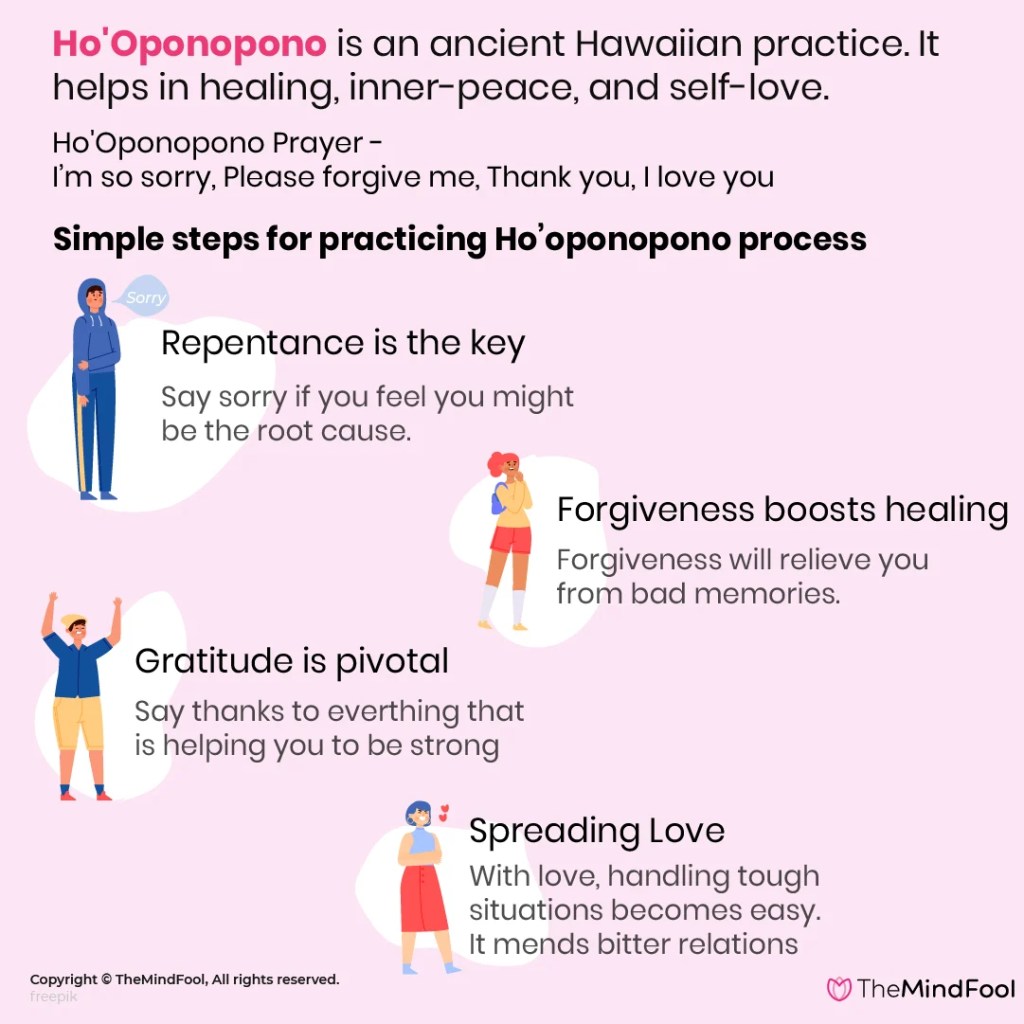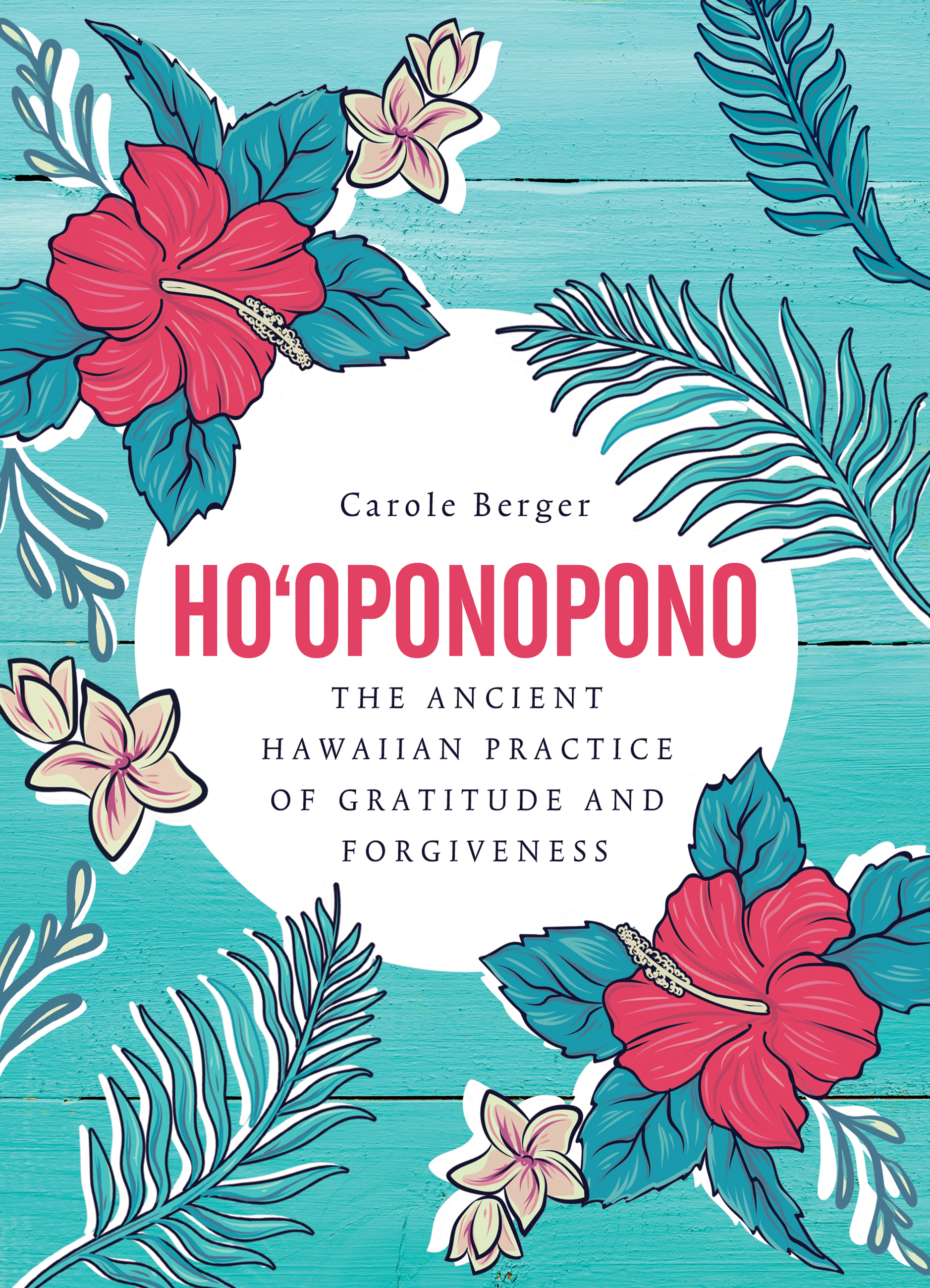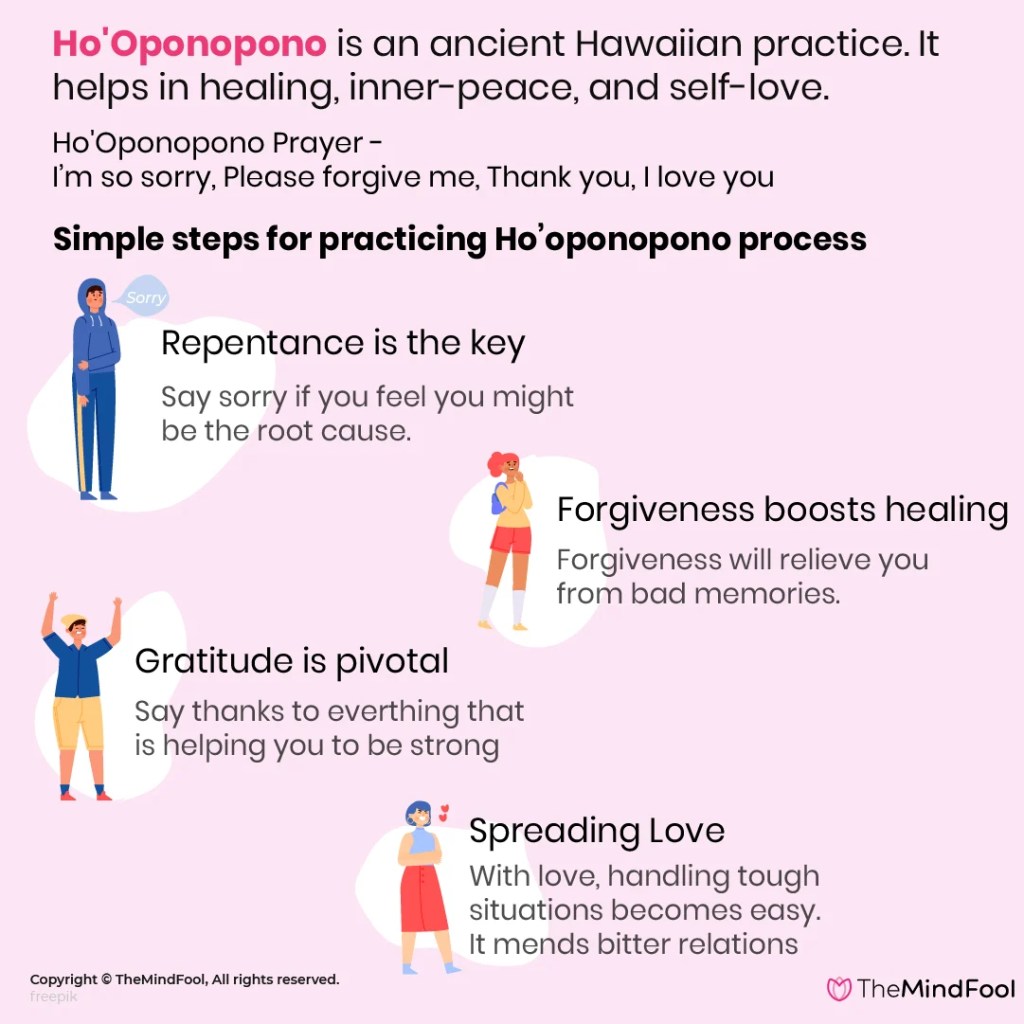In exploring the connection between Ho’oponopono and the practice of gratitude, you’ll uncover a fascinating parallel between these two ancient traditions. Ho’oponopono, a Hawaiian healing technique, utilizes forgiveness and reconciliation to restore harmony and balance. On the other hand, gratitude is a practice of acknowledging and appreciating the blessings in one’s life. Both Ho’oponopono and gratitude share a common thread of releasing negativity and embracing a positive outlook. By understanding their intertwined nature, we can harness their combined power to cultivate a deeper sense of peace and contentment in our lives.

1. Understanding Ho’oponopono
1.1 Origins of Ho’oponopono
Ho’oponopono is a traditional Hawaiian practice of reconciliation and forgiveness. The word itself translates to “to make right,” emphasizing the importance of restoring harmony and balance in relationships, both with oneself and others. Originating in ancient Hawaiian culture, Ho’oponopono was traditionally used to address conflicts within families or communities and restore a sense of peace.
1.2 Principles of Ho’oponopono
At the core of Ho’oponopono are four key principles: repentance, forgiveness, gratitude, and love. These principles guide the practice and promote healing and transformation. Repentance involves acknowledging one’s mistakes or negative actions, taking responsibility, and expressing remorse. Forgiveness is an essential aspect of Ho’oponopono, as it involves letting go of feelings of anger, resentment, and blame towards oneself and others. Gratitude is cultivated as a way to appreciate the goodness and blessings in one’s life, while love serves as the foundation for healing and reconciliation.
1.3 Ho’oponopono as a Forgiveness Practice
One of the fundamental aspects of Ho’oponopono is its focus on forgiveness. Through this practice, individuals are encouraged to release negative emotions and grudges, fostering reconciliation and a sense of inner peace. Ho’oponopono teaches that holding onto resentment and anger only harms oneself, and forgiveness allows for healing and growth. By forgiving oneself and others, individuals can let go of emotional burdens, creating space for positivity and love to flourish.
1.4 The Power of Letting Go
Letting go is a powerful concept within the practice of Ho’oponopono. It involves releasing attachments to negative experiences, thoughts, and emotions that no longer serve a positive purpose. Letting go allows individuals to free themselves from the past and open themselves up to new opportunities and possibilities. By relinquishing control over situations that are beyond their influence, individuals can focus on what they can change and create a more peaceful and fulfilling life.
2. Exploring the Practice of Gratitude
2.1 Definition of Gratitude
Gratitude is a heartfelt appreciation and recognition of the goodness and abundance in one’s life. It goes beyond simply saying “thank you” and involves cultivating a positive mindset and acknowledging the blessings, big and small, that exist in every moment. Gratitude encourages individuals to focus on what they have, rather than what they lack, and fosters a sense of contentment and fulfillment.
2.2 Benefits of Gratitude
Practicing gratitude has been scientifically proven to have numerous benefits for mental, emotional, and physical well-being. Studies have shown that gratitude can reduce stress levels, increase feelings of happiness and satisfaction, improve relationships, enhance self-esteem, and even improve sleep quality. By regularly engaging in gratitude practices, individuals can experience greater resilience, improved mood, and an overall enhanced sense of well-being.
2.3 Cultivating a Grateful Mindset
Cultivating a grateful mindset involves intentionally shifting one’s focus towards the positive aspects of life. It requires being fully present and aware of the blessings and beauty that surrounds us, even in challenging times. Gratitude practices can include keeping a gratitude journal, expressing appreciation to others, practicing mindfulness, or simply taking a moment each day to reflect on what one is grateful for. By consciously choosing to cultivate gratitude, individuals can reframe their perspective and experience greater joy and fulfillment.
2.4 Gratitude as a Daily Practice
To truly integrate gratitude into one’s life, it is important to make it a daily practice. Consistency is key in reaping the many benefits of gratitude. Engaging in daily gratitude rituals or habits can help anchor the practice and make it a natural part of one’s daily routine. Whether it is taking a few minutes each morning to reflect on gratitude, expressing appreciation to loved ones, or finding gratitude in even the smallest of moments throughout the day, incorporating gratitude into daily life can profoundly enhance well-being and overall happiness.
3. The Interconnection of Ho’oponopono and Gratitude
3.1 Recognizing the Similarities
While Ho’oponopono and gratitude may appear to be distinct practices, they are deeply interconnected in their essence. Both emphasize the importance of letting go, forgiveness, and love. Ho’oponopono encourages individuals to release negative emotions and reconcile with others, while gratitude teaches the art of appreciating and embracing life’s blessings. The unifying thread between the two is the recognition that healing and transformation occur when one consciously chooses to release what no longer serves them and focus on what brings joy and gratitude.
3.2 Synergistic Effects of Ho’oponopono and Gratitude
When practiced together, Ho’oponopono and gratitude can have profound synergistic effects. Both practices involve shifting one’s mindset towards positivity and cultivating a mindset of forgiveness, appreciation, and love. By integrating gratitude into the Ho’oponopono process, individuals can strengthen the healing power of forgiveness and enhance their overall sense of well-being. Gratitude can support and reinforce the process of letting go, making it easier to release negative emotions and promote a sense of inner peace.
3.3 Gratitude as a Foundation for Ho’oponopono
Gratitude provides a solid foundation for the practice of Ho’oponopono. When individuals cultivate gratitude, it becomes easier to approach conflicts, challenges, and relationships with a mindset of forgiveness and love. Gratitude allows individuals to appreciate the lessons and growth opportunities that arise from difficult situations, fostering a sense of compassion and understanding. By starting from a place of gratitude, individuals can approach the Ho’oponopono practice with an open heart and a willingness to heal and reconcile.
3.4 Ho’oponopono as a Pathway to Gratitude
Conversely, Ho’oponopono can serve as a pathway to gratitude. By engaging in the practice of Ho’oponopono and releasing negative emotions, individuals create space for gratitude to flourish. As they let go of resentment and anger, they are able to recognize and appreciate the blessings and abundance that exist in their lives. Ho’oponopono allows individuals to shift their perspective and find gratitude even in challenging or painful situations. This practice can ultimately lead to a deeper sense of gratitude and a more profound experience of joy and fulfillment.
4. Ho’oponopono’s Role in Cultivating Gratitude
4.1 Healing Relationships through Forgiveness
Ho’oponopono plays a crucial role in healing relationships through forgiveness. By actively engaging in the practice of Ho’oponopono, individuals can release negative emotions and let go of past hurts, allowing space for forgiveness and reconciliation. Through forgiveness, relationships can be restored, and a sense of peace and harmony can be cultivated. This process paves the way for gratitude, as individuals find appreciation for the healing and growth that occurs in the aftermath of forgiveness.
4.2 Releasing Negative Emotions through Ho’oponopono
Negative emotions can be a significant obstacle to experiencing gratitude. Ho’oponopono offers a powerful tool for releasing these emotions and cultivating a more positive mindset. By acknowledging and facing negative emotions, individuals can begin the process of healing and transformation. Through Ho’oponopono, individuals learn to let go of anger, resentment, and blame, creating space for gratitude and positivity to enter their lives.
4.3 Transforming Perspective with Gratitude
Gratitude has the power to transform one’s perspective on life. Through the practice of gratitude, individuals learn to focus on the positive aspects of their experiences, even in difficult times. This shift in perspective allows individuals to find value, lessons, and even blessings in challenging circumstances, ultimately leading to a greater sense of optimism and resilience. By integrating gratitude into the practice of Ho’oponopono, individuals can enhance the transformative power of forgiveness and achieve a deeper level of healing.
4.4 Moving Forward with a Grateful Heart
As individuals engage in the practice of Ho’oponopono and experience the healing power of forgiveness, a natural outcome is moving forward with a grateful heart. Through the release of negative emotions and the cultivation of gratitude, individuals are able to let go of the past and embrace the present moment with appreciation and joy. This grateful heart becomes a compass for navigating future relationships and experiences, allowing individuals to approach life with love, compassion, and gratitude.

5. The Gratitude Practice in Ho’oponopono
5.1 Expressing Gratitude through Ho’oponopono Mantras
Ho’oponopono mantras can be infused with gratitude to deepen the practice. These mantras, such as “I’m sorry, please forgive me, thank you, I love you,” can be enhanced by emphasizing the gratitude component. By expressing gratitude within the Ho’oponopono practice, individuals can amplify the healing and transformative effects of forgiveness. By adding “thank you” into the mantra, it serves as a reminder to appreciate the growth and lessons that arise from the process.
5.2 Utilizing Gratitude in the Ho’oponopono Process
Incorporating gratitude into the Ho’oponopono process involves intentionally focusing on what one is grateful for during the practice. This can be achieved through visualizations, simply stating aspects of one’s life to be grateful for, or reflecting on specific moments throughout the day that elicited gratitude. By actively infusing gratitude into the Ho’oponopono process, individuals can create a more profound and transformative experience of forgiveness, healing, and reconciliation.
5.3 Combining Ho’oponopono and Gratitude Rituals
Combining Ho’oponopono and gratitude rituals can create a powerful synergy of healing and gratitude. This can involve incorporating gratitude journaling into the Ho’oponopono practice, starting Ho’oponopono sessions with a moment of gratitude, or ending gratitude rituals with Ho’oponopono mantras. By intertwining these practices, individuals can deepen their experience of both forgiveness and gratitude, amplifying the positive impact on their lives.
5.4 Enriching Ho’oponopono with Appreciation
Appreciation is a fundamental aspect of gratitude, and it can be used to enrich the Ho’oponopono practice. Incorporating appreciation involves recognizing and acknowledging the positive qualities, actions, or experiences of oneself and others. By consciously appreciating these aspects, individuals create an atmosphere of love, compassion, and understanding within the Ho’oponopono practice. This appreciation fosters a deeper sense of connection and gratitude, further enhancing the healing and transformative effects of the practice.
6. Applying Ho’oponopono and Gratitude in Daily Life
6.1 Integrating Gratefulness into Ho’oponopono Practices
To apply Ho’oponopono and gratitude in daily life, it is essential to integrate gratefulness into Ho’oponopono practices. This can involve starting each day with a gratitude practice before engaging in Ho’oponopono, or consciously infusing gratitude into Ho’oponopono mantras throughout the day. By making gratefulness a part of the daily Ho’oponopono practice, individuals can maintain a positive mindset, promote healing, and deepen their sense of gratitude.
6.2 Embracing Ho’oponopono’s Teachings of Love and Gratitude
Embracing the teachings of love and gratitude inherent in Ho’oponopono involves actively applying these principles in daily life. This can include expressing love and appreciation to others, practicing forgiveness and letting go of grudges, and finding moments throughout the day to feel and express gratitude. By living in alignment with the principles of Ho’oponopono, individuals can cultivate a life of love, compassion, and gratitude.
6.3 Practicing Ho’oponopono and Gratitude in Challenging Times
Challenging times provide an opportunity to deepen the practice of Ho’oponopono and gratitude. In moments of adversity, individuals can lean on the practice of Ho’oponopono to release negative emotions and cultivate forgiveness. Gratitude can support individuals in finding appreciation for the lessons and growth opportunities within challenges. By practicing Ho’oponopono and gratitude during difficult times, individuals can navigate obstacles with resilience, grace, and a sense of inner peace.
6.4 Nurturing a Harmonious Life with Ho’oponopono and Gratitude
By nurturing a harmonious life with Ho’oponopono and gratitude, individuals can create a foundation for lasting peace and fulfillment. This involves incorporating both practices into daily routines, relationships, and interactions. By approaching life with love, forgiveness, and gratitude, individuals can cultivate harmony within themselves and their surroundings. This harmonious life becomes a reflection of the deep healing and transformation experienced through the practices of Ho’oponopono and gratitude.

7. Case Studies: Ho’oponopono and Gratitude in Action
7.1 Healing Family Relationships through Ho’oponopono and Gratitude
Case studies have demonstrated the transformative power of combining Ho’oponopono and gratitude in healing family relationships. By engaging in the Ho’oponopono practice and promoting forgiveness, individuals have been able to resolve conflicts, release negative emotions, and restore harmony within their families. The addition of gratitude has further amplified these transformations by fostering appreciation for the growth and love that arise from the healing process.
7.2 Overcoming Obstacles with a Gratitude-focused Ho’oponopono Practice
Individuals facing significant obstacles have found solace and strength in a gratitude-focused Ho’oponopono practice. By acknowledging the challenges they face while embracing gratitude, these individuals have been able to shift their perspective, find meaning within their experiences, and overcome seemingly insurmountable obstacles. The integration of Ho’oponopono and gratitude has empowered them to navigate adversity with grace and resilience.
7.3 Personal Transformation through the Combination of Ho’oponopono and Gratitude
Personal transformation is a common outcome when Ho’oponopono and gratitude are combined. Through the practice of Ho’oponopono, individuals have experienced profound healing, forgiveness, and growth. Gratitude has played a crucial role in this transformation by allowing individuals to appreciate the positive changes occurring within themselves and their lives. This combination has resulted in a deep sense of self-love, acceptance, and an expanded capacity for joy and gratitude.
7.4 Enhancing Well-being with Daily Ho’oponopono and Gratitude Rituals
Daily Ho’oponopono and gratitude rituals have been shown to enhance overall well-being. By engaging in these practices consistently, individuals have reported reduced stress levels, improved emotional regulation, increased happiness, and a greater sense of purpose and peace. These daily rituals serve as a reminder to let go, forgive, and cultivate gratitude, contributing to a more balanced and fulfilling life.
8. The Scientific Perspective: Ho’oponopono, Gratitude, and the Mind
8.1 Exploring the Mind-Body Connection
The scientific perspective on Ho’oponopono and gratitude reveals the intricate connection between the mind and body. Studies have shown that practicing Ho’oponopono and gratitude can have a positive impact on both mental and physical health. This connection is attributed to the influence of mindset on physiological responses, stress levels, and overall well-being. The mind-body connection emphasizes the importance of maintaining a positive mindset through practices such as Ho’oponopono and gratitude.
8.2 The Impact of Gratitude on Mental and Physical Health
Research has demonstrated the various ways in which gratitude positively impacts mental and physical health. Gratitude has been shown to reduce symptoms of anxiety and depression, improve sleep quality, enhance self-esteem, and increase resilience. Physically, gratitude has been linked to decreased blood pressure, improved heart health, and a stronger immune system. The practice of gratitude within Ho’oponopono provides individuals with a potent tool for improving their overall well-being.
8.3 Ho’oponopono’s Influence on Neural Pathways
Neuroscience has revealed the influence of Ho’oponopono on neural pathways. By engaging in the practice of Ho’oponopono and forgiveness, individuals have the potential to rewire their brains and create new, more positive neural pathways. This rewiring can lead to a shift in mindset, allowing individuals to experience greater compassion, forgiveness, and gratitude. The practice of Ho’oponopono can literally reshape the brain and enhance overall mental and emotional health.
8.4 The Intersection of Ho’oponopono, Gratitude, and Neuroplasticity
Neuroplasticity, the brain’s ability to change and adapt, offers insight into the intersection of Ho’oponopono, gratitude, and the mind. By engaging in Ho’oponopono and gratitude practices, individuals are actively influencing their brain’s neural connections and pathways. This influence can create lasting changes in mindset, emotional well-being, and overall cognitive functioning. The combination of Ho’oponopono and gratitude harnesses the power of neuroplasticity and opens the door to profound transformation.

9. Incorporating Ho’oponopono and Gratitude into Spiritual Practices
9.1 Ho’oponopono as a Spiritual Cleansing Ritual
Within spiritual practices, Ho’oponopono serves as a powerful tool for spiritual cleansing and renewal. By engaging in the practice of Ho’oponopono, individuals release negative emotions and purify their minds, hearts, and spirits. This process allows individuals to align with their true selves, cultivate inner peace, and experience a deeper connection with the spiritual realm. Ho’oponopono can be seen as a sacred ritual that supports spiritual growth and transformation.
9.2 Gratitude’s Role in Spiritual Growth and Transformation
Gratitude plays a vital role in spiritual growth and transformation. By expressing gratitude, individuals acknowledge and honor the divine presence in their lives. Gratitude opens the heart and allows for a deeper connection with the spiritual realm. It fosters a sense of reverence, humility, and awe, creating an expansive space for spiritual growth and transformation. Gratitude is the bridge that connects the physical and spiritual realms, allowing individuals to experience a profound sense of connection and oneness.
9.3 Combining Ho’oponopono and Gratitude in Meditation Practices
Meditation practices provide a fertile ground for combining Ho’oponopono and gratitude. By incorporating these practices into meditation, individuals can deepen their experience of forgiveness, healing, and gratitude. During meditation, individuals can focus on releasing negative emotions through Ho’oponopono and cultivate a mindset of gratitude. This combination creates a profound space for inner peace, spiritual connection, and personal transformation.
9.4 Connecting with Higher Consciousness through Ho’oponopono and Gratitude
The combination of Ho’oponopono and gratitude allows individuals to connect with higher consciousness. By engaging in these practices, individuals open themselves up to the wisdom and guidance of the universe. Ho’oponopono helps individuals clear away layers of negativity and limiting beliefs, allowing for a deeper connection with higher consciousness. Gratitude serves as a pathway to this higher state of consciousness, opening the channels for divine love, grace, and wisdom to flow.
10. Maintaining a Lifelong Journey of Ho’oponopono and Gratitude
10.1 Embracing Ho’oponopono and Gratitude as Daily Habits
To maintain a lifelong journey of Ho’oponopono and gratitude, it is essential to embrace these practices as daily habits. Consistency is key in reaping the long-term benefits and transformation that they offer. By making Ho’oponopono and gratitude a natural part of daily life, individuals can continuously release negative emotions, cultivate forgiveness, and deepen their sense of gratitude.
10.2 Deepening the Practice over Time
As individuals progress on their journey of Ho’oponopono and gratitude, the practice naturally deepens. What may have begun as surface-level forgiveness and gratitude evolves into a profound state of healing, transformation, and expanded consciousness. By continuously deepening the practice, individuals can uncover new layers of self-awareness, compassion, and appreciation for the interconnectedness of all beings.
10.3 Overcoming Challenges and Maintaining Consistency
Challenges may arise along the journey of Ho’oponopono and gratitude, and it is important to overcome these challenges and maintain consistency in the practice. When facing obstacles, it is essential to return to the core principles of Ho’oponopono and gratitude. By anchoring oneself in forgiveness, love, and gratitude, individuals can navigate challenges with grace and resilience, reinforcing the importance of these practices in their lives.
10.4 Cultivating a Life of Harmony with Ho’oponopono and Gratitude
Maintaining a lifelong journey of Ho’oponopono and gratitude ultimately leads to cultivating a life of harmony. By integrating these practices into every aspect of life, individuals can experience greater peace, joy, and fulfillment. Ho’oponopono and gratitude become a way of being, permeating relationships, work, health, and spirituality. This life of harmony is a testament to the transformative power of forgiveness, gratitude, and love.
In conclusion, Ho’oponopono and gratitude are deeply intertwined practices that have the power to bring about profound healing, transformation, and harmony. By embracing the principles of forgiveness, love, and gratitude, individuals can release negative emotions, cultivate a positive mindset, and experience the transformative power of letting go. The integration of Ho’oponopono and gratitude allows individuals to tap into their inner capacity for healing, growth, and spiritual connection, creating a life filled with love, appreciation, and joy. Embrace the journey of Ho’oponopono and gratitude and experience the transformative power they offer.

